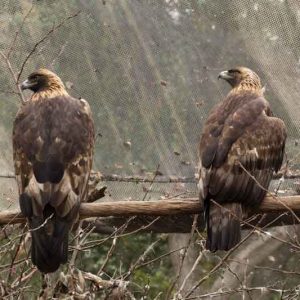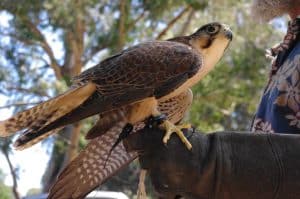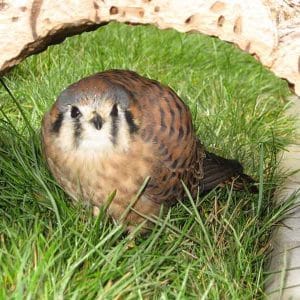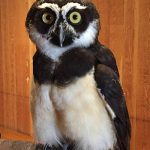Blog
Raptor Science Resources
We’re welcoming our Spring 2018 event SWOOP – Drones & Raptors (2/9, 2/10-11 & 2/17-19) with this blog about all things raptor.
View our sibling blog post about all things drones here.
What makes a bird a raptor (also known as a bird of prey)?
This guide from the Bureau of Land Management is a great reference. In summary, all raptors have four things in common: 1) a hooked beak, 2) sharp talons, 3) keen eyesight, and 4) a carnivorous diet.
- Hooked beak — “The raptor’s beak sets it apart from other birds. All raptors have the same beak
design, curved at the tip with sharp cutting edges to rip and tear apart their prey.” - Sharp talons — “Birds of prey have powerful leg and toe muscles that end with sharp talons. This
makes their feet lethal weapons. Their feet are perfectly designed to catch, hold, and carry prey.
The length and size of a raptors toes, and the curvature and thickness of its talons are related to
the type of prey it pursues.” - Keen eyesight — “Raptors have very keen eyesight due to the relative size of the eyeball in
proportion to their head, eye muscles designed for rapid focus, and the high resolution of the
retina.”- Did you know? Diurnal raptors and nocturnal raptors have different kinds of eyes! Click here to read more.
- Carnivorous diet — “Although the diet varies from species to species, all raptors are meat eaters.”
What are some examples of raptors? What do they look like? What do they sound like?
This online, interactive bird catalog from the Audubon Society includes recorded bird calls for many of the birds pictured! Simply click on the little blue speaker symbol to hear that bird’s call. Three of the four birds pictured below are raptors. They are check-marked in green (from left to right) the American kestrel, the aplomado falcon, and the barn owl. The red ‘X’d bird is an American robin, and not a raptor.
Do any raptors live in California?
Yes, this site lists over 30 species of raptors that live in California at some point during their lifetime. Did you know? Raptors are actually protected under California law! Some California raptors you may recognize: the barn owl, red-tailed hawk, turkey vulture, and bald eagle.
Do any raptors live at CuriOdyssey? Why do they live at CuriOdyssey?
Yes, we have many raptors who call CuriOdyssey home. Most live with us because they are non-releasable due to some injury, trauma, or closeness to humans that makes their release unsafe. View an extensive list, with photos, of our animal family here. Do you recognize any of these faces? Come meet them at CuriOdyssey today!

Our golden eagles are often perched in their exhibit, watching guests from up high.
How can I support raptors?
We have a few ideas to get you started:
- On a local level:
- Don’t use rodenticide on pests. Raptors are often poisoned and die this way. Share this info with your friends.
- Visit CuriOdyssey with your family and strengthen the connection to raptors and nature with younger generations.
- Volunteer at local bird events (there are many places looking for help, check out these Citizen Science Projects here).
- Explore ways to create space for raptors in your own backyard or neighborhood garden. Did you know? Feeding smaller native birds also helps raptors, who in turn feed on the smaller birds and rodents attracted to the feed. Thus, support the little birds and you’ll be supporting the bigger ones. An interesting article about raptors in the backyard, here.
- On a global level:
- Donate to and/or share bird advocate websites. Explore organizations doing good to protect and advocate for endangered and threatened birds. If you can’t donate to their cause, share their website. You never know which of your friends will share it in turn, and further the opportunity for financial support.
- Be aware some products are manufactured in a way that is unsustainable, and hurts wildlife like raptors. Ask questions, be curious. Where is this product made? Who is affected by its production? Is there a product that will donate to a cause I care about if I purchase it?
- Subscribe to ‘be in the know’ about all things raptor! Support the people who cover raptor stories, because their coverage matters. Click here to check out the lastest from Audubon.
●○●○●○●○●○●○●○●○●○●○●○●○●○●○●○●
We hope you’ve enjoyed this information, and encourage you to share what you’ve learned.
Don’t forget to check out SWOOP – Drones & Raptors.
February 10 – 11 and February 17 – 19
Opening Night – February 9, 5 p.m. – 8 p.m.
●○●○●○●○●○●○●○●○●○●○●○●○●○●○●○●
Thank you for your curiosity!
Find us online. #CuriOdyssey #SciencePwr
Join the CuriOdyssey Community
LOCATION
1651 Coyote Point Drive
San Mateo, CA 94401
Ohlone Land Acknowledgement
650-342-7755
[email protected]
CuriOdyssey is a 501(c)(3) nonprofit, Tax ID 94-1262434






